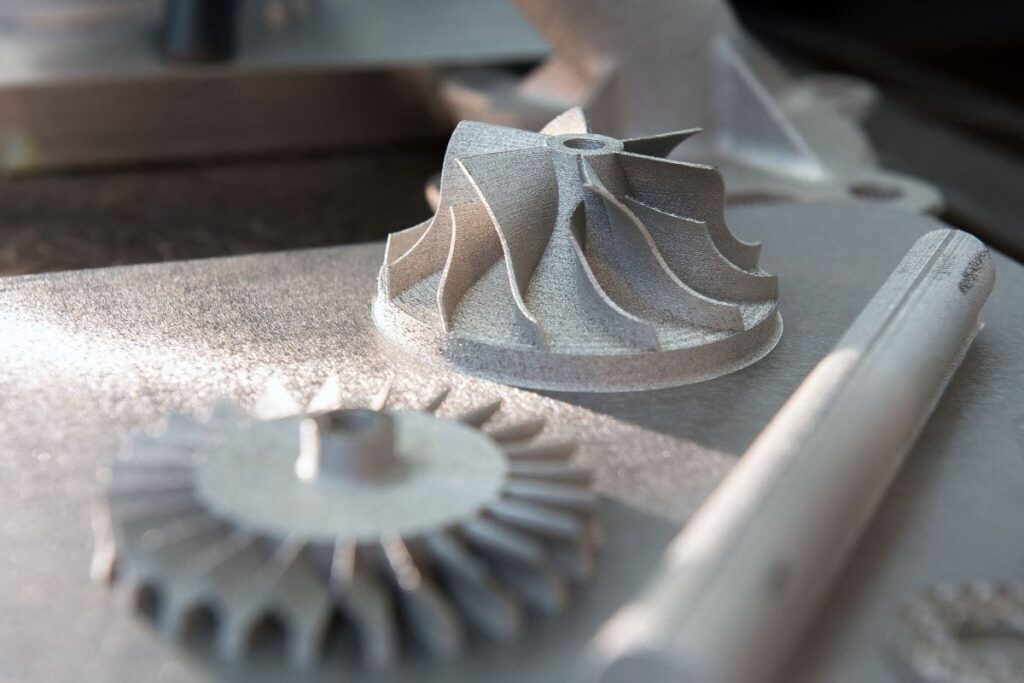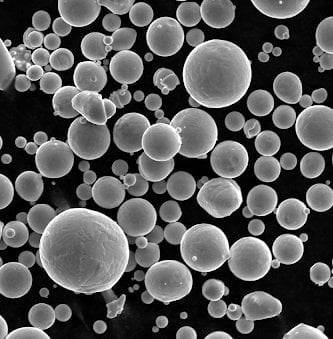440C roestvast staal poeder voor 3D printen: Een uitgebreide gids
Inhoudsopgave
Overzicht
440C roestvast staal is een martensitisch roestvast staal dat bekend staat om zijn uitzonderlijke sterkte, hardheid en slijtvastheid. In de afgelopen jaren heeft 440C poeder van roestvrij staal aan populariteit gewonnen bij 3D printen, met name in industrieën die hoogwaardige componenten vereisen. Dit artikel duikt in de wereld van 440C roestvrij staal poeder voor 3D printen en onderzoekt de eigenschappen, toepassingen, specificaties, leveranciers en nog veel meer.

440C Roestvrij staalpoeder Soorten, samenstelling en eigenschappen
| Eigendom | Beschrijving |
|---|---|
| Samenstelling | 440C roestvrij staalpoeder bestaat voornamelijk uit ijzer, chroom, koolstof en molybdeen. |
| Hardheid | 440C roestvrij staalpoeder vertoont een uitzonderlijke hardheid, variërend van 58 tot 62 HRC na warmtebehandeling. |
| Kracht | Het heeft een hoge treksterkte, meestal rond de 1.200 MPa, en een vloeigrens van ongeveer 1.000 MPa. |
| Slijtvastheid | 440C roestvast staal poeder biedt een uitstekende slijtvastheid dankzij de hoge hardheid en de vorming van chroomcarbiden tijdens de warmtebehandeling. |
| Corrosieweerstand | Hoewel het niet zo corrosiebestendig is als austenitisch roestvast staal, biedt 440C roestvast staalpoeder een gemiddelde weerstand tegen corrosie. |

440C Roestvrij staalpoeder Toepassingen
440C roestvrij staalpoeder wordt toegepast in verschillende industrieën, waaronder:
| Industrie | Toepassingen |
|---|---|
| Lucht- en ruimtevaart | Turbinebladen, onderdelen van landingsgestellen en structurele onderdelen |
| Automobiel | Tandwielen, assen en andere slijtagegevoelige onderdelen |
| Medisch | Chirurgische instrumenten, implantaten en tandheelkundig gereedschap |
| Olie en gas | Kleppen, pompen en andere onderdelen die worden blootgesteld aan zware omgevingen |
| Gereedschap | Snijgereedschappen, mallen en matrijzen |
Specificaties, maten en kwaliteiten
440C roestvast staal poeder is verkrijgbaar in verschillende specificaties, afmetingen en kwaliteiten. Veel voorkomende specificaties zijn onder andere:
| Specificatie | Beschrijving |
|---|---|
| ASTM A666 | Standaardspecificatie voor constructiedelen van roestvast staal in poedermetallurgie |
| ISO 3091 | Internationale standaard voor roestvaststalen poedermetallurgische materialen |
| MPIF-standaard 35 | Standaard voor metaalpoeders gebruikt bij additive manufacturing |
Maten van 440C roestvrij staal poeder variëren meestal van 15 tot 150 micron. Soorten 440C roestvrij staal poeder zijn onder andere:
| Cijfer | Beschrijving |
|---|---|
| 440C | Standaardrang met evenwichtige eigenschappen van sterkte, hardheid en corrosieweerstand |
| 440C Gemodificeerd | Gemodificeerde kwaliteit met verbeterde corrosiebestendigheid en taaiheid |
| 440C Hoog Koolstof | Kwaliteit met hoger koolstofgehalte voor verbeterde hardheid en slijtvastheid |
De prijzen voor 440C roestvrij staalpoeder variëren afhankelijk van factoren zoals leverancier, hoeveelheid en deeltjesgrootte. Over het algemeen variëren de prijzen van $50 tot $200 per kilogram.
Voor- en nadelen
| Pluspunten | Nadelen |
|---|---|
| Uitzonderlijke sterkte en hardheid | Lagere corrosieweerstand in vergelijking met austenitisch roestvast staal |
| Uitstekende slijtvastheid | Vatbaar voor waterstofbrosheid als het niet goed warmtebehandeld is |
| Veelzijdige toepassingen in diverse industrieën | Kan duurder zijn dan andere roestvrijstalen poeders |
FAQ
| Vraag | Antwoord |
|---|---|
| Wat is het verschil tussen 440C en andere roestvast staalsoorten? | 440C roestvast staal heeft een hoger koolstofgehalte dan andere soorten, wat resulteert in een hogere hardheid en slijtvastheid. |
| Is 440C poeder van roestvrij staal geschikt voor alle 3D printprocessen? | 440C roestvrij staalpoeder wordt voornamelijk gebruikt in laser-poederbedfusie (LPBF) en elektronenbundelpoederbedfusie (EBPBF) processen. |
| Hoe kan ik de corrosieweerstand van 440C roestvrij staalpoeder verbeteren? | Warmtebehandeling en oppervlaktebehandelingen, zoals nitreren of passiveren, kunnen de corrosieweerstand van 440C roestvrij staalpoeder verbeteren. |
| Wat zijn de typische toepassingen van 440C roestvrij staal in poedervorm? | 440C roestvast staal poeder wordt vaak gebruikt in de ruimtevaart, auto-industrie, medische industrie, olie en gas en de werktuigindustrie. |
| Hoe kies ik de juiste leverancier voor 440C roestvrij staalpoeder? | Houd bij het kiezen van een leverancier rekening met factoren zoals de reputatie van de leverancier, de productkwaliteit, de prijs en de technische ondersteuning. |
Conclusie
440C roestvast staal poeder biedt een unieke combinatie van sterkte, hardheid en slijtvastheid, waardoor het een ideale keuze is voor het 3D printen van hoogwaardige componenten in verschillende industrieën. De veelzijdigheid en aanpasbaarheid maken het een waardevol materiaal voor ingenieurs en fabrikanten die de grenzen van innovatie willen verleggen.
Delen op
MET3DP Technology Co, LTD is een toonaangevende leverancier van additieve productieoplossingen met hoofdkantoor in Qingdao, China. Ons bedrijf is gespecialiseerd in 3D printapparatuur en hoogwaardige metaalpoeders voor industriële toepassingen.
Onderzoek om de beste prijs en een op maat gemaakte oplossing voor uw bedrijf te krijgen!
gerelateerde artikelen
Over Met3DP
Recente update
Ons product
NEEM CONTACT MET ONS OP
Nog vragen? Stuur ons nu een bericht! Na ontvangst van uw bericht behandelen wij uw verzoek met een heel team.

Metaalpoeders voor 3D printen en additieve productie
BEDRIJF
PRODUCT
contact informatie
- Qingdao-stad, Shandong, China
- [email protected]
- [email protected]
- +86 19116340731









